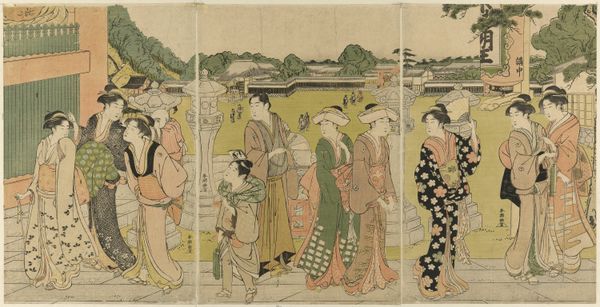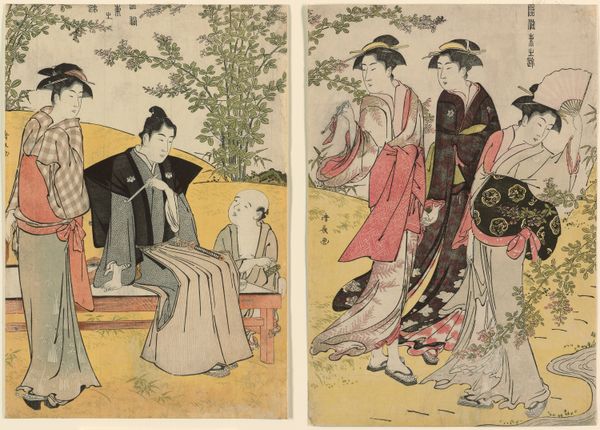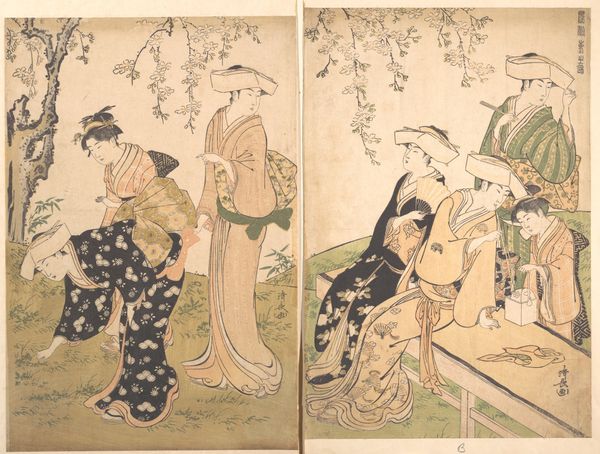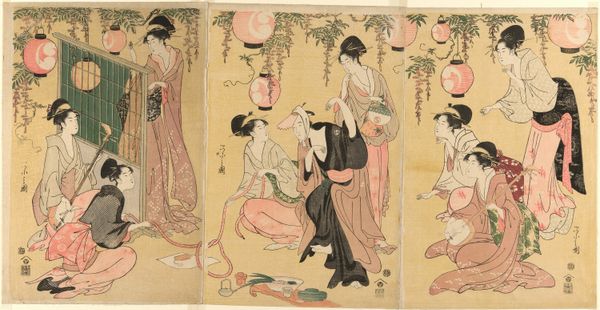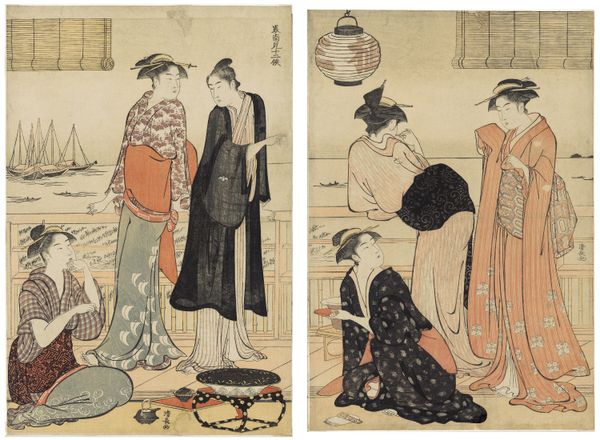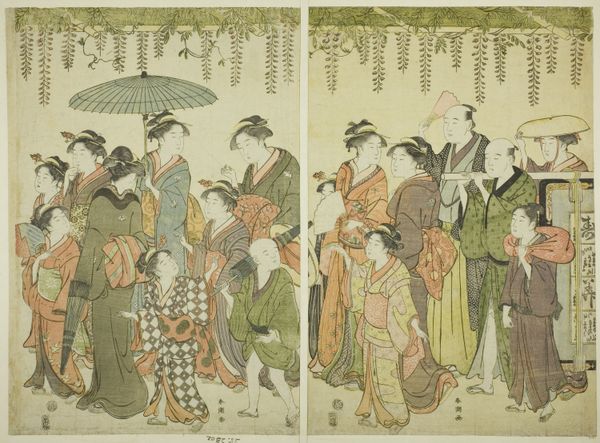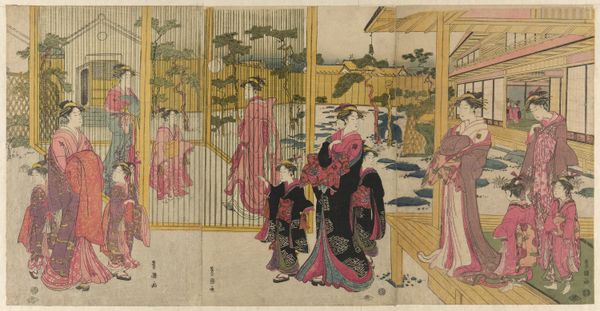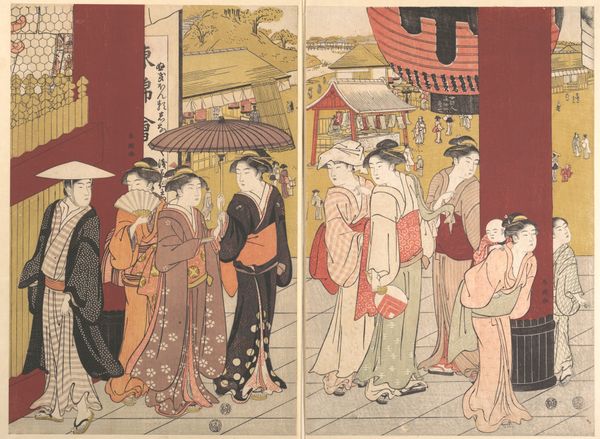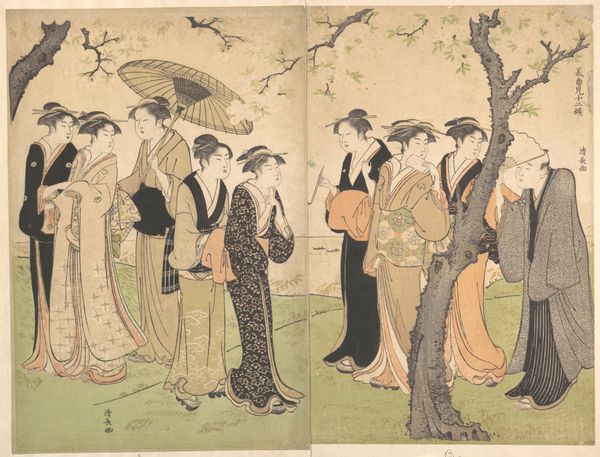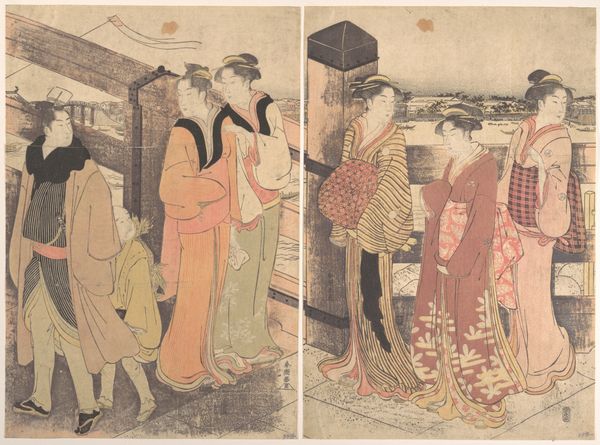
print, woodblock-print
#
portrait
# print
#
asian-art
#
ukiyo-e
#
woodblock-print
#
genre-painting
#
mixed media
#
watercolor
#
calligraphy
Dimensions: height 386 mm, width 261 mm, height 393 mm, width 261 mm
Copyright: Rijks Museum: Open Domain
Editor: Here we have Torii Kiyonaga’s woodblock print, "Yoshitsune een serenade brengend aan Joruri hime", created between 1783 and 1787. It’s so…elegant, almost like a stage set with those figures arranged across the panels. What do you make of the ways women are portrayed? Curator: It's crucial to acknowledge that Ukiyo-e prints like this, while depicting ostensibly beautiful women, are deeply embedded within a complex system of representation and consumption in Edo-period Japan. We need to unpack these images beyond surface aesthetics. Who were these women for, and who was producing these images of them? How does the power dynamic influence their representation? Editor: That’s a good point. I hadn’t thought about who the intended audience would have been. Do the clothes they’re wearing mean something about their roles, about the class they belong to? Curator: Absolutely. The elaborate kimonos, hairstyles, even the positioning of bodies and objects all signify social status, gender roles, and the overall expectations of women in that society. And notice, there's no singular ideal here. Consider the diversity in attire and posture – how might each presentation communicate a different facet of female identity within its specific social context? Are they powerful portrayals or constrained by expectation? Editor: So by looking closely, we can see hints of social expectations and maybe even a little about the subjects as individuals within their context. I guess there’s always so much more going on than I initially see! Curator: Exactly! And by continually questioning those visual clues, we actively engage with history, philosophy, and critical feminist thought simultaneously. Art becomes this meeting point where intersectionality meets expression! Editor: It sounds like analyzing this artwork becomes less about aesthetic judgment, and more about historical dialogue. I am starting to think differently about art. Curator: Precisely, understanding Ukiyo-e involves a commitment to deconstructing these complex portrayals and revealing what we are telling about society at that time!
Comments
No comments
Be the first to comment and join the conversation on the ultimate creative platform.
